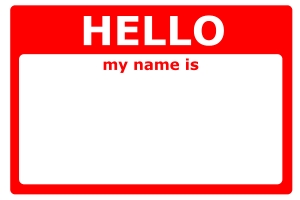 The slate. Your introduction to the producer, director, or casting agent listening to your audition. Recently, we discussed whether or not you should slate yourself. Today, let’s talk about the slate itself and how you should approach it.
The slate. Your introduction to the producer, director, or casting agent listening to your audition. Recently, we discussed whether or not you should slate yourself. Today, let’s talk about the slate itself and how you should approach it.
First, remember that most of the people listening to your submission are on a time crunch. Since they are likely listening to 50, 100, 200 or more auditions, they don’t have the luxury to dilly-dally through extensive diatribes that include anything other than your name and role (if necessary) unless, of course, they ask for something more in the specs. For example, “Mark Avery” or “This is Mark Avery as Dad”, should suffice. Anymore than that, and you risk the chance of annoying the voice chooser and having them hit the EJECT button on your audition. Don’t add the role if there are no other roles … they know what you’re reading for, in that case! As a producer, we are usually looking to narrow the field on the first go-through. An unnecessarily detailed slate can be reason enough to put your read into that first round of cuts.
Second, as stated above, this is your introduction to the listener. So, use that opportunity to acclimate them to the type of read and/or character you will be performing. By that, I mean, it can be very jarring and distracting to the listener if you were to slate in your normal voice and then suddenly pop into a monster truck “Sunday! Sunday!! SUNDAY!!!” type of read. In fact, it can be so disconcerting that they actually won’t be paying close attention to the beginning of your read, and can be halfway through your performance by the time they have settled themselves back in. As previously mentioned, they don’t have the time to give you a “start-over”. Let your slate match your read – it prepares the listener for what is ahead and familiarizes them with what to expect from your read.
Lastly, don’t put your slate last! I have heard of some people doing this because they think it will get the voice buyer to listen to the entire audition. Unfortunately, that is not necessarily the case as the listener often will know in the first few lines whether or not they will put you into the “Contenders” or “Pretenders” group. In that case, all you may do is frustrate the listener as they try to locate your slate. Now, you’ve given them a reason to hit that EJECT button rather than give you the edge you were hoping for.
Most voice actors don’t put much thought into their slate. But, as you can see, it is a vital part of your auditioning process. As a rule, keep it short, keep it simple, and keep it in character.
By VO Coach Mark Avery

I have heard similar advice about slating yourself in character for regular acting auditions. Thank you for sharing.
LikeLiked by 1 person
A well known and respected coach gave me a good one when it comes to slating. Record your slate after your read then, move it to the front of the file. It’s the easiest way to make sure your slate has the same vibe as the audition.
LikeLike
Good tip, Chuck. Quite often I will do that if I feel I really have my read locked in so that the slate doesn’t take me out of “the pocket”.
LikeLike
I was hired as a “Sam Elliott” voice for an animation. While in the studio I asked “how much of Sam Elliott do you want?” “Sam Elliott? Oh we just liked the voice you slated with” which was my normal voice.
This doesn’t add or subtract from your comments, I just wanted to share an exception.
LikeLike
Great story, Klem. Also goes to show, despite the direction on a piece of copy, they often really aren’t sure of what they are looking for.
LikeLike